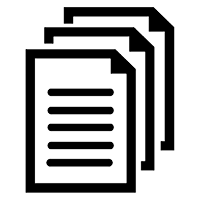Information, Time, and Money
1. Accuracy of information
Inventory management is complex process.
If some or all of the important issues – what’s in stock, which vendors have the most competitive prices and others are entered manually into a spreadsheet or are kept track in handwritten files, there is a great deal of potential for human error.
Any business that uses these less-than-desirable methods is prone to bad information and mistakes. In the area of long-term care or other residential healthcare facilities, bad information is crucial.
Without correct numbers, the inaccuracies can cost a lot of time and money or even be fatal. For the sake of the enterprise having correct and quickly usable inventory absolutely need to be consistently accurate and up-to-date.
2. Time spent tracking
With manual or even separate/disconnected Excel spreadsheets, inventory “management” becomes “hide and seek” just to find all the records.
The time spent scrolling through unorganized spreadsheets or worse yet spent to do corrective manual inventory counts takes valuable time of administrators, doctors, or nurses that could be well-spent elsewhere.
3. Cost
Healthcare organizations are businesses and have to be able to run efficiently or go out of business. Misplaced or wrong inventory can cost, literally, a fortune. Too much or too little in the way of supplies means waste – and patient/caregiver anxiety and even anger.
Running a residential facility is expensive enough without adding to the costs by not having accurate inventory control.
4. Compliance
ERH systems rely on accuracy – lack of it can cause even more problems for failing to demonstrate the proper controls in place. Since inventory impacts ERH, at least in terms of what has been delivered to residents, the lack of control could cause huge problems.
5. Morale and Efficiency
Bad inventory systems can turn into the “blame game” and create bad feelings between staff members. Constantly having to deal with wrong inventory or bad ordering because of it can create major rifts between people who need to work together in harmony.
Having to waste team figuring what is in stock, on order or in transit not makes for short tempers; it also creates a disorderly process for satisfying resident needs and disrupts other areas as well.
6. Problems with Learning About and Use of “Better” Systems
Even if new inventory control software is brought into play, it has to be designed to integrate with existing systems.
Deciding to eliminate the “guessing game” system of pieces of papers and multiple style of spreadsheets by putting in a complete computerized system is a step in the right direction. BUT, unless it is easily incorporated with other areas, it can disrupt operations.
Without seamless connection with areas including purchasing, finance and ERH a lot of time and money can be wasted by trying to figure out to make the entire operations process work with dissimilar systems. Training and retraining and workarounds can frustrate the entire staff.
The wisest course is to find the right inventory control system, one that is easy to use in and of itself and also works well with all the other systems in play within the organization.
Look for the highly supportive software providers who spend as much effort on having their software work well with other systems as they do on making managing inventory more efficient.
AdminiCare by InBeam is a sophisticated, affordable medical supplies inventory system that allows for easy, accurate and complete integration with ordering, supply and billing for residential care facilities.

